Cover
First Page
Contents
Foreword
Preface
Acknowledgments
About the Cover Image
Section 1 - General Programming
Introduction
1.1 The Science of Debugging Games
1.2 An HTML-Based Logging and Debugging System
1.3 The Clock: Keeping Your Finger on the Pulse of the Game
1.4 Designing and Maintaining Large Cross-Platform Libraries
1.5 Fight Memory Fragmentation with Templated Freelists
1.6 A Generic Tree Container in C++
1.7 The Beauty of Weak References and Null Objects
1.8 A System for Managing Game Entities
1.9 Address-Space Managed Dynamic Arrays for Windows and the Xbox
1.10 Critically Damped Ease-In/Ease-Out Smoothing
1.11 A Flexible, On-the-Fly Object Manager
1.12 Using Curstom RTTI Properties to Stream and Edit Objects
1.13 Using XML Without Sacrificing Speed
Section 2 - Mathematics
Introduction
2.1 Zobrist Hash Using the Mersenne Twister
2.2 Extracting Frustim and Camera Information
2.3 Solving Accuracy Problems in Large World Coordinates
2.4 Nonuniform Splines
2.5 Using the Covariance Matrix for Better-Fitting Bounding Objects
2.6 The Jacobian Transpose Method for Inverse Kinematics
Section 3 - Physics
Introduction
3.1 Ten Fingers of Death: Algorithms for Combat Killing
3.2 Vehicle Physics Simulation for CPU-Limited Systems
3.3 Writing a Verlet-Based Physics Engine
3.4 Constraints in Rigid Body Dynamics
3.5 Fast Contact Reduction for Dynamics Simulation
3.6 Interactive Water Surfaces
3.7 Fast Deformations with Multilayered Physics
3.8 Modal Analysis for Fast, Stable Deformation
Section 4 - Artificial Intelligence
Introduction
4.1 Third-Person Camera Navigation
4.2 Narrative Combat: Using AI to Enhance Tension in an Action Game
4.3 NPC Decision Making: Dealng with Randomness
4.4 An Object-Oriented Utility-Based Decision Architecture
4.5 A Distributed-Reasoning Voting Architecture
4.6 Attractors and Repulsors
4.7 Advanced Wall Building for RTS Games
4.8 Aritificial Neural Networks on Programmable Hardware
Section 5 - Graphics
Introduction
5.1 Poster Quality Screenshots
5.2 GPU Shadow Volume Construction for Nonclosed Meshes
5.3 Perspective Shadow Maps
5.4 Combined Depth and ID-Based Shadow Buffers
5.5 Carving Static Shadows into Geometry
5.6 Adjusting Real-Time Lighting for Shadow Volumes and Optimized Meshes
5.7 Real-Time Halftoning: Fast and Simple Stylized Shading
5.8 Techniques to Allpy Team Colors to 3D Meshes
5.9 Fast Sepia Tone Conversion
5.10 Dynamic Gamma Using Sampled Scene Luminance
5.11 Heat and Haze Post-Processing Effects
5.12 Hardware Skinning with Quaternions
5.13 Motion Capture Data Compression
5.14 Fast Collision Detection for 3D Bones-Based Articulated Characters
5-15 Terrain Occlusion Culling with Horizons
Section 6 - Network and Multiplayer
Introduction
6.1 General Lobby Design and Development
6.2 Thousands of Clients per Server
6.3 Efficient MMP Game State Storage
6.4 Practical Application of Parallel-State Machines in a Client-Server Environment
6.5 Bit Packing: A Network Compressoin Technique
6.6 Time and Consistency Management for Multiserver Based MMORPGs
Section 7 - Audio
Introduction
7.1 A Brief Introduction to OpenAL
7.2 A Simple Real-Time Lip-Synching System
7.3 Dynamic Variables and Audio Programming
7.4 Creating an Audio Scripting System
7.5 Implementing an Environmental Audio System Using EAX and ZoomFX
7.6 Controlling Real-Time Sound Synthesis from Game Physics
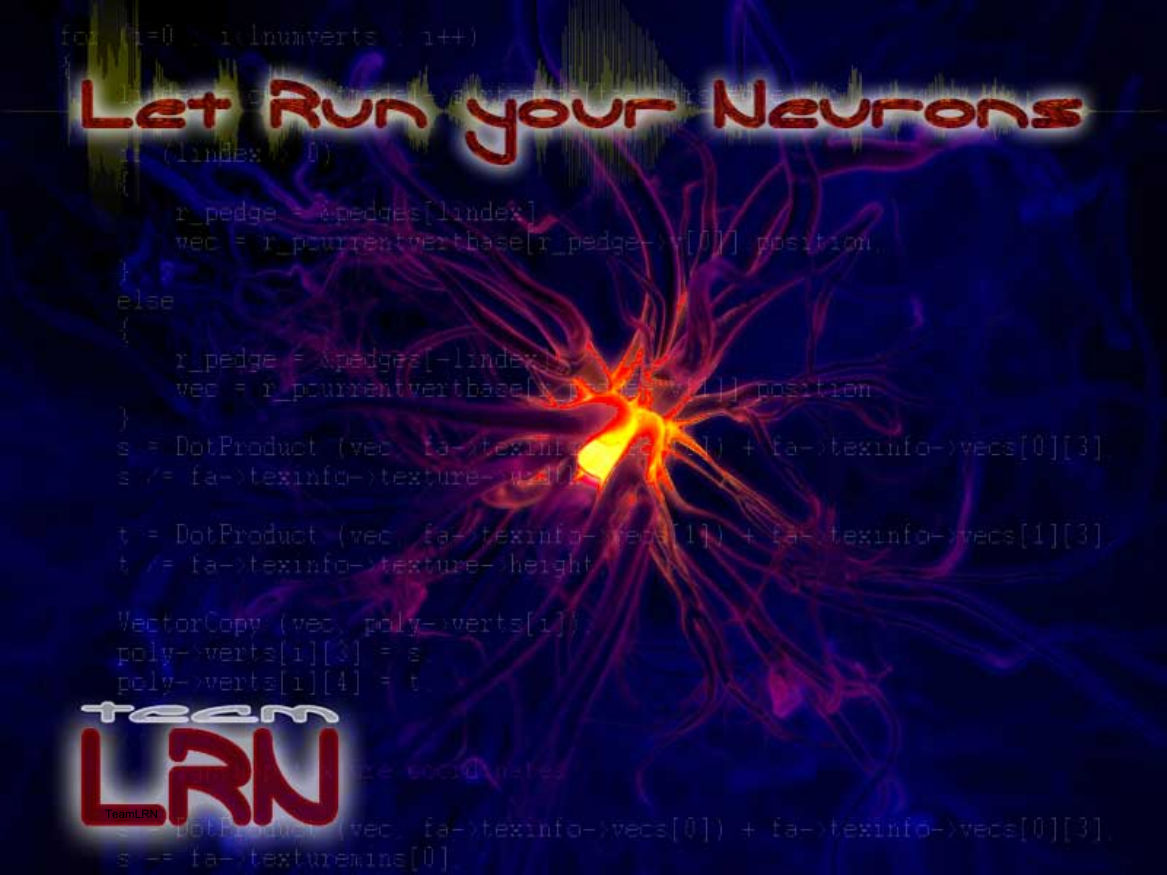
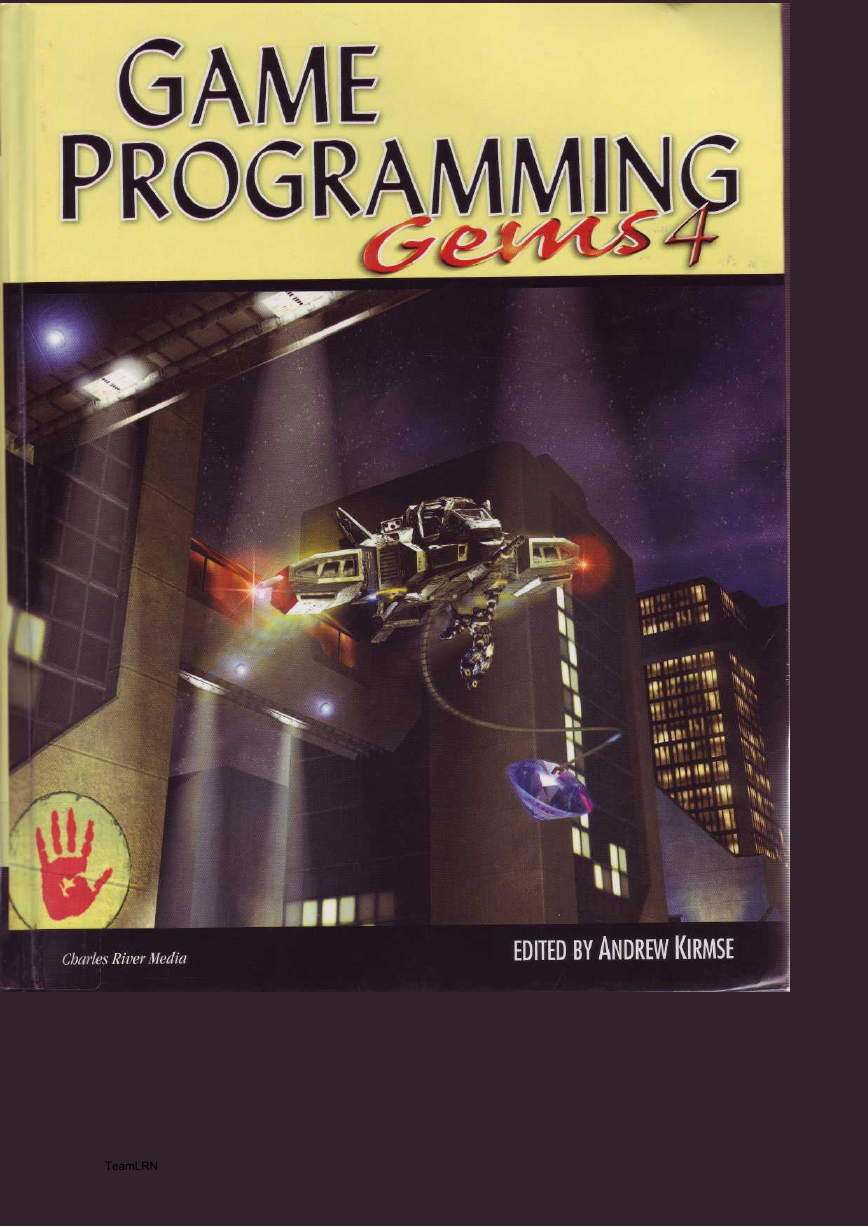
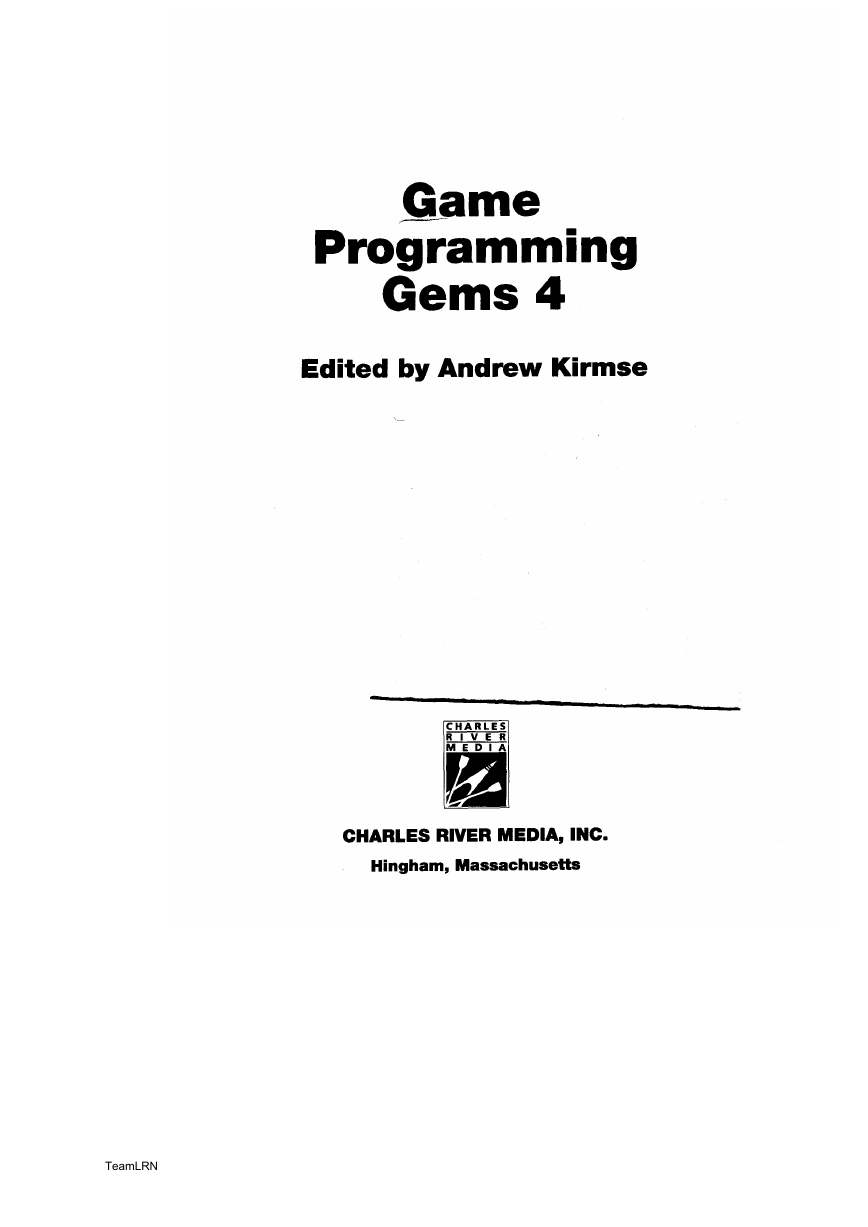
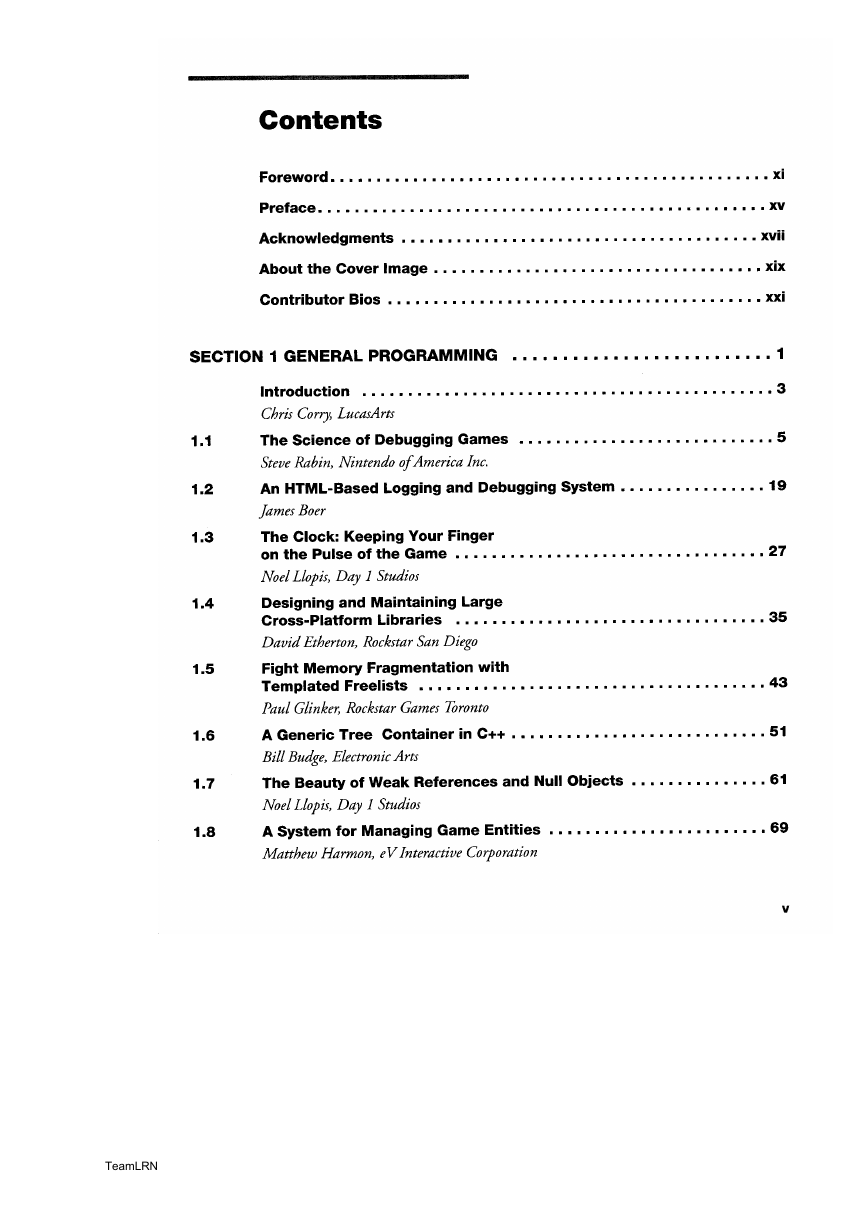
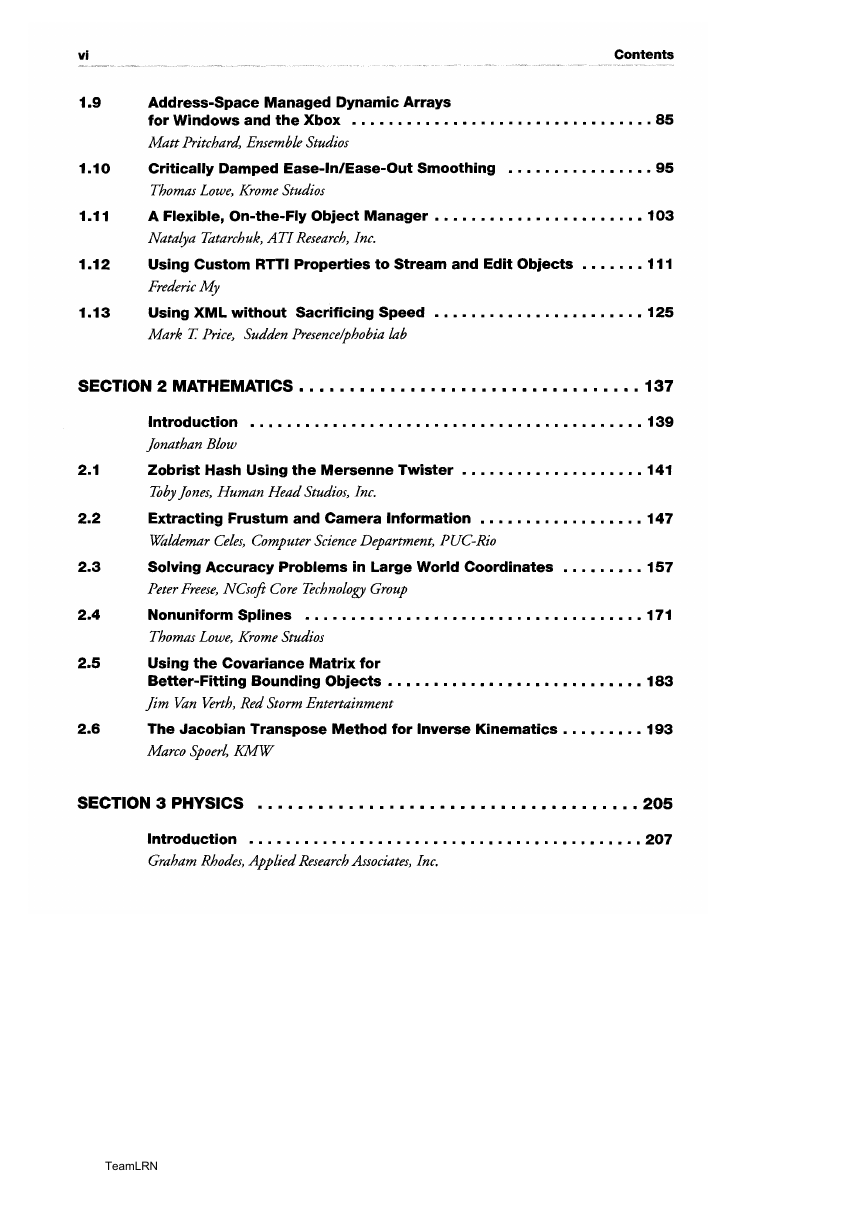
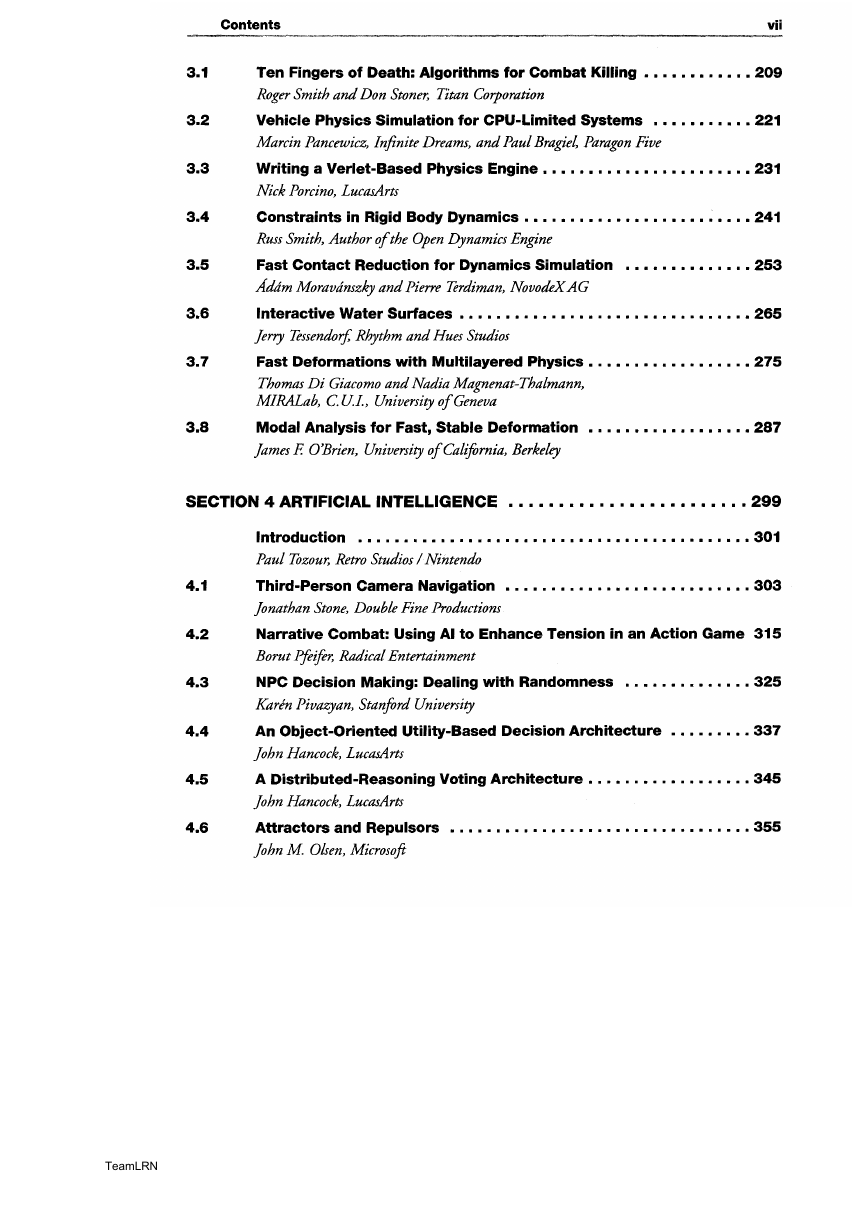
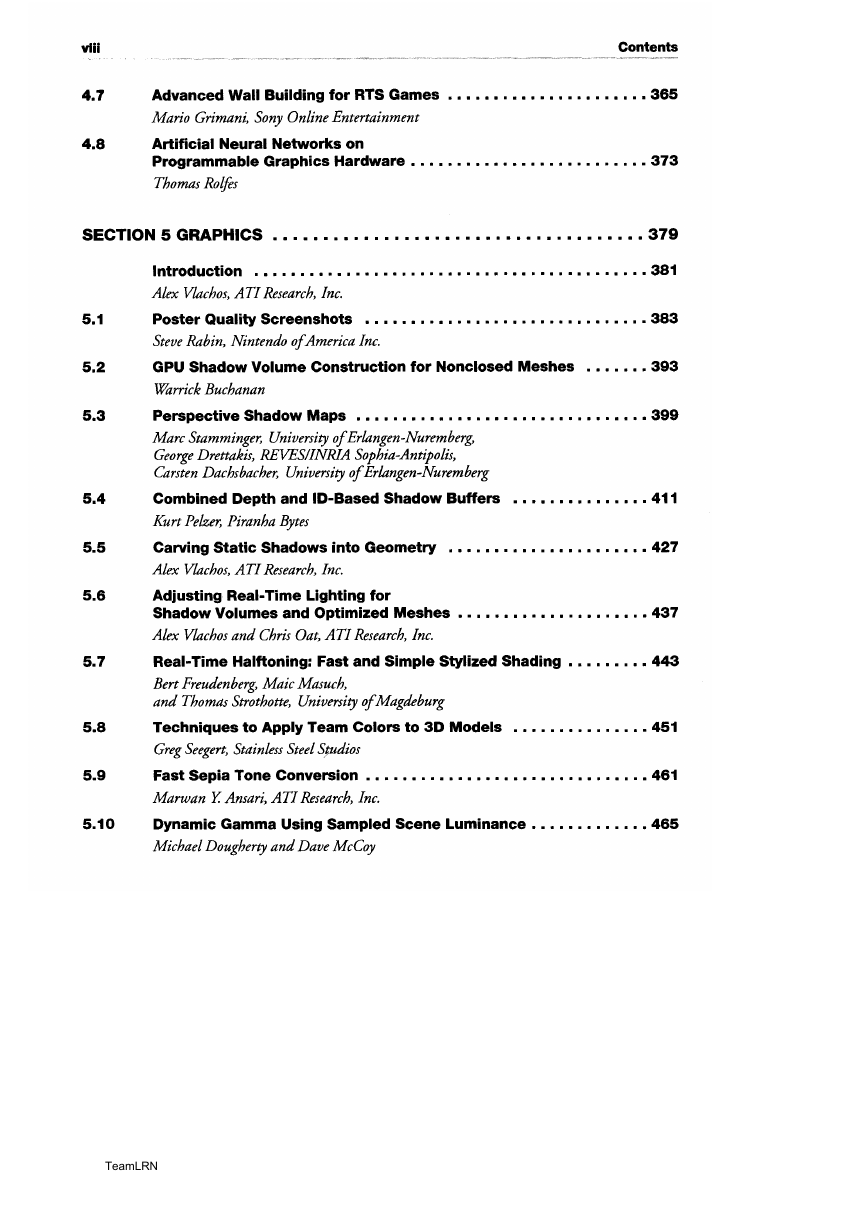
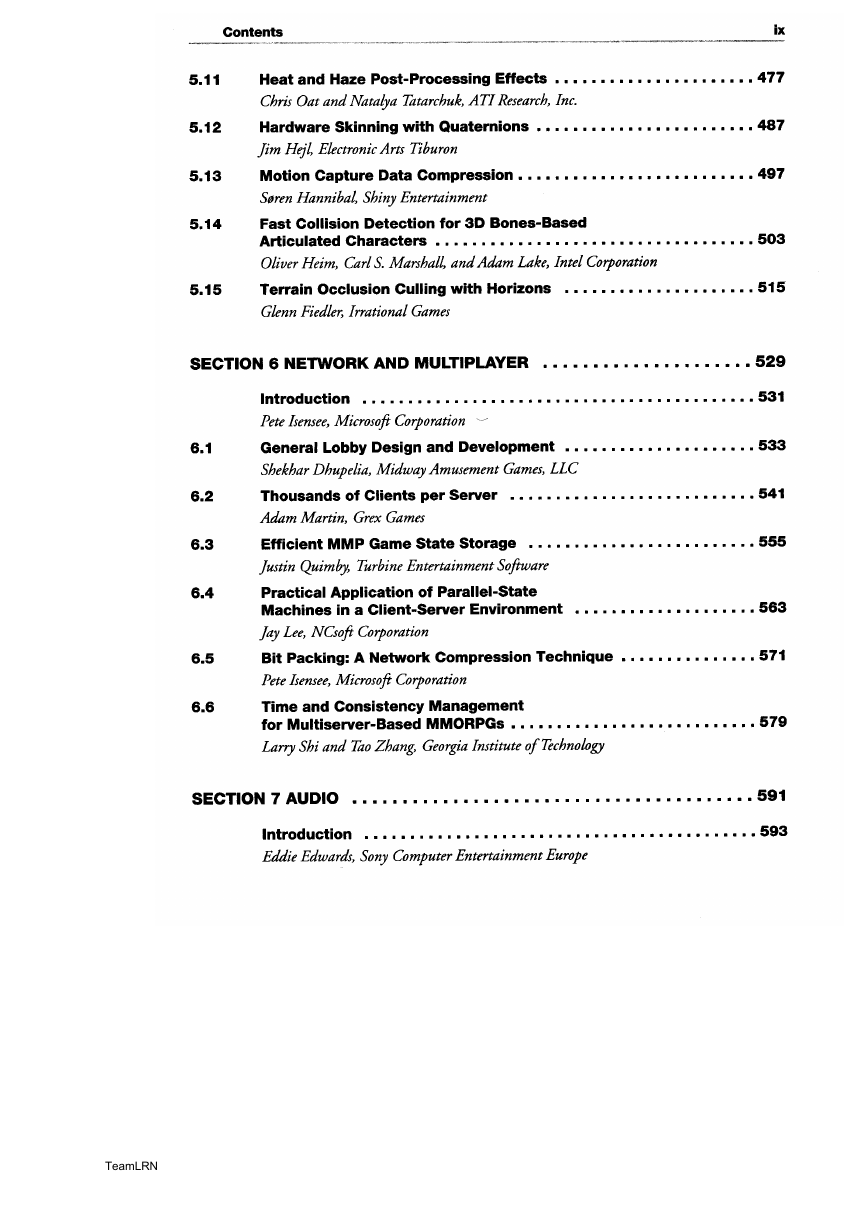








 2023年江西萍乡中考道德与法治真题及答案.doc
2023年江西萍乡中考道德与法治真题及答案.doc 2012年重庆南川中考生物真题及答案.doc
2012年重庆南川中考生物真题及答案.doc 2013年江西师范大学地理学综合及文艺理论基础考研真题.doc
2013年江西师范大学地理学综合及文艺理论基础考研真题.doc 2020年四川甘孜小升初语文真题及答案I卷.doc
2020年四川甘孜小升初语文真题及答案I卷.doc 2020年注册岩土工程师专业基础考试真题及答案.doc
2020年注册岩土工程师专业基础考试真题及答案.doc 2023-2024学年福建省厦门市九年级上学期数学月考试题及答案.doc
2023-2024学年福建省厦门市九年级上学期数学月考试题及答案.doc 2021-2022学年辽宁省沈阳市大东区九年级上学期语文期末试题及答案.doc
2021-2022学年辽宁省沈阳市大东区九年级上学期语文期末试题及答案.doc 2022-2023学年北京东城区初三第一学期物理期末试卷及答案.doc
2022-2023学年北京东城区初三第一学期物理期末试卷及答案.doc 2018上半年江西教师资格初中地理学科知识与教学能力真题及答案.doc
2018上半年江西教师资格初中地理学科知识与教学能力真题及答案.doc 2012年河北国家公务员申论考试真题及答案-省级.doc
2012年河北国家公务员申论考试真题及答案-省级.doc 2020-2021学年江苏省扬州市江都区邵樊片九年级上学期数学第一次质量检测试题及答案.doc
2020-2021学年江苏省扬州市江都区邵樊片九年级上学期数学第一次质量检测试题及答案.doc 2022下半年黑龙江教师资格证中学综合素质真题及答案.doc
2022下半年黑龙江教师资格证中学综合素质真题及答案.doc